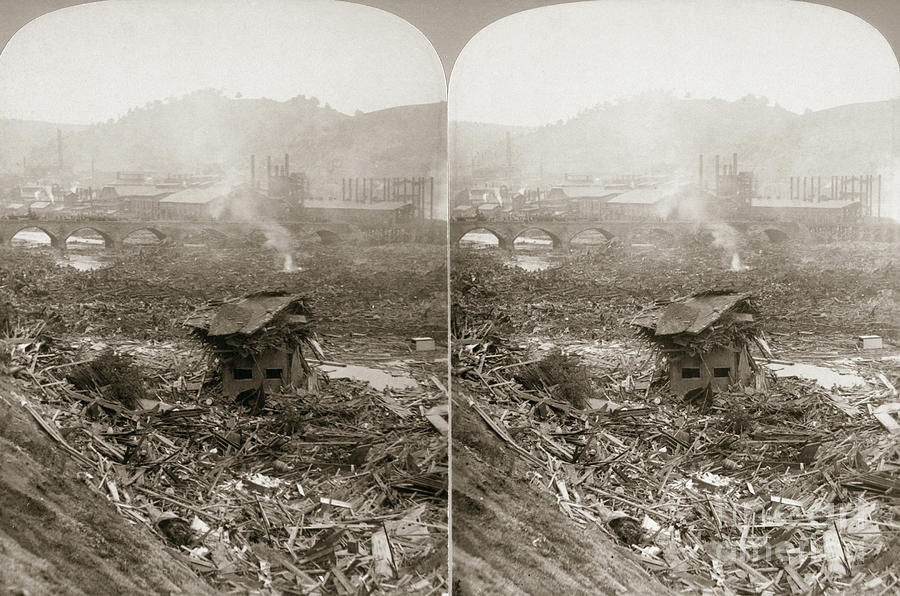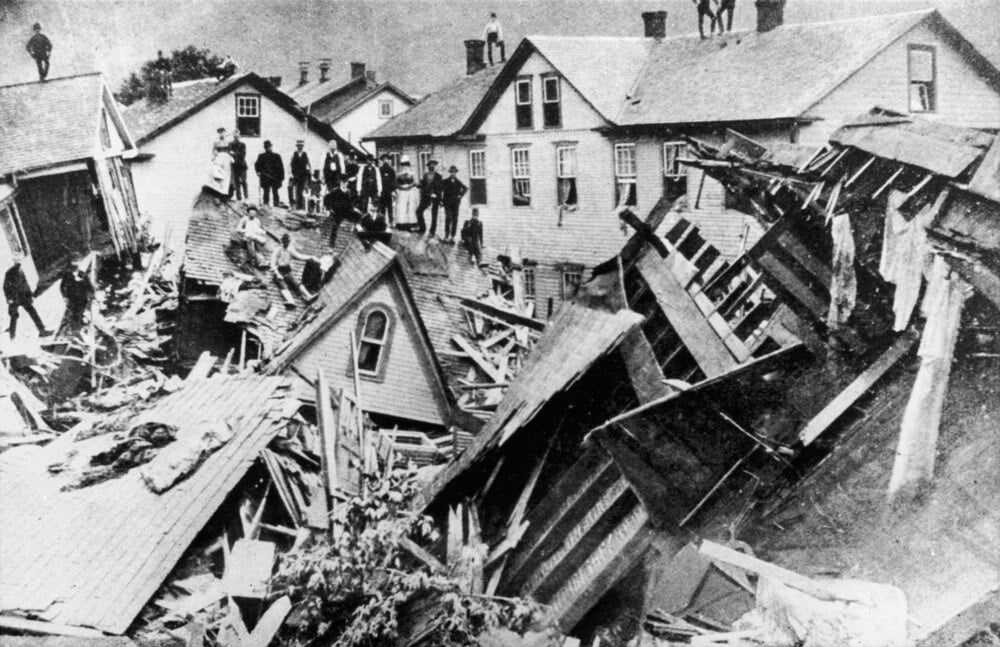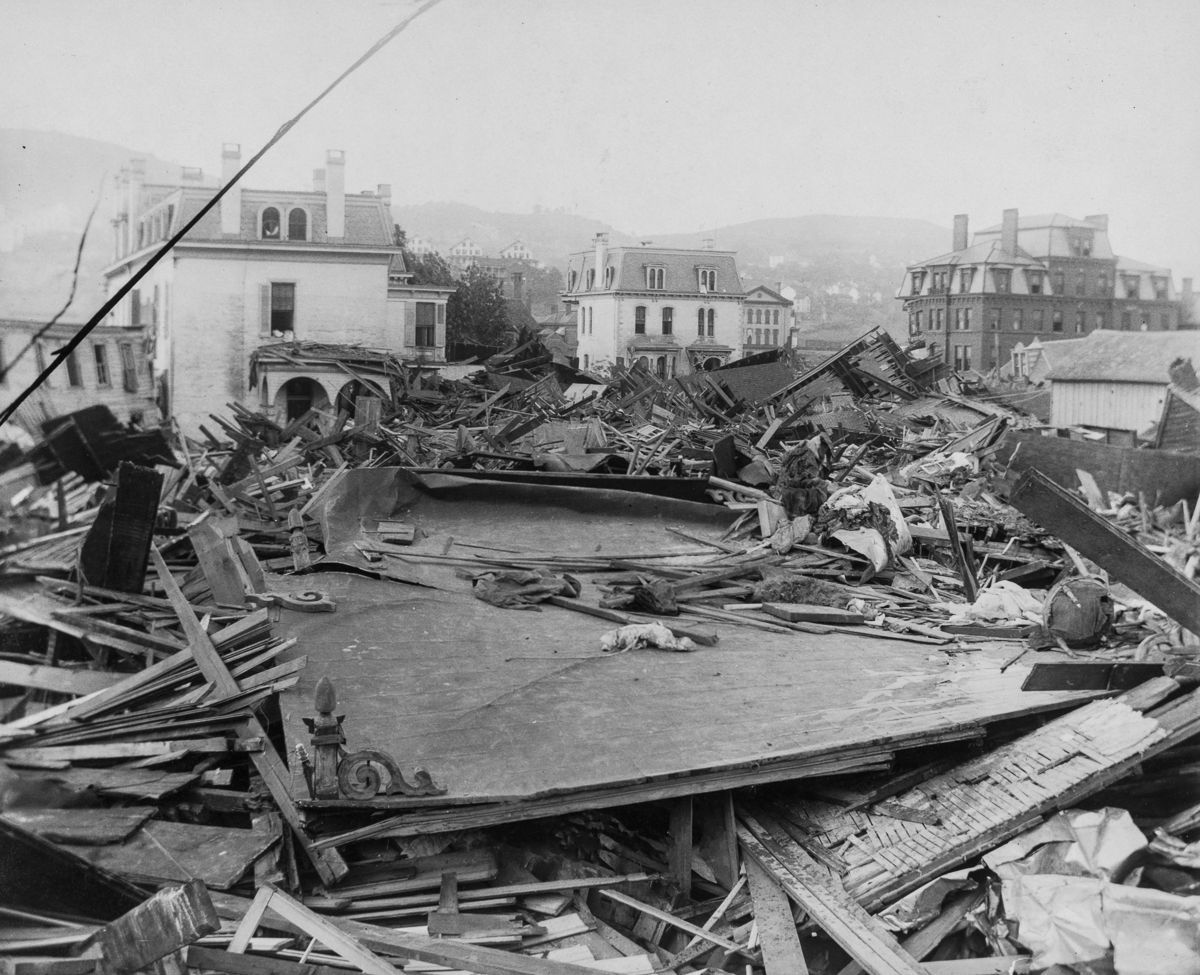

Dynamite was eventually used to clear it. Still standing and in use as a railroad bridge, the Stone Bridge is a landmark associated with survival and recovery from the flood. On the morning of May 31, 1889, Elias Unger, the president of Pennsylvanias South. It took workers three months to remove the mass of debris, largely because it was bound by the steel wire from the ironworks. A tree protrudes from a house tossed by the flood. After floodwaters receded, the pile of debris at the bridge was seen to cover 30 acres, and reached 70 feet in height.

The fire at the Stone Bridge burned for three days. The Johnstown Flood occurred on May 31, 1889, after the failure of the South Fork Dam, which is located on the south fork of the Little Conemaugh River, 14 miles upstream of the town of Johnstown, Pennsylvania. Some people who had been washed downstream became trapped in an inferno as the debris piled up against the Stone Bridge caught fire at least 80 people died there. Eventually, gravity caused the surge to return to the dam, causing a second wave to hit the city, but from a different direction. The debris carried by the flood formed a temporary dam at the bridge, resulting in the flood surge rolling upstream along the Stoney Creek River. sourceĪt Johnstown, the Stone Bridge, which was a substantial arched structure, carried the Pennsylvania Railroad across the Conemaugh River. It was added to the National Register of Historic Places in 1972.Debris above Pennsylvania Railroad bridge. It was damaged in the Johnstown flood of 1936 and ceased to function as a library in 1971. It is a three-story brick building with a tile roof encased in dormers in the French Gothic revival style. According to records compiled by The Johnstown Area Heritage Association, bodies were found as far away as Cincinnati, and as late as 1911 99 entire families died in the flood, including 396 children 124 women and 198 men were widowed 98 children were orphaned and one-third of the dead, 777 people, were never identified their remains were buried in the Plot of the Unknown in Grandview Cemetery in Westmont. Carnegie provided all funds toward the construction and maintenance of the library through 1930. It is one of 3,000 such libraries constructed between 18. It was built in 1890–1891, with funds provided by the philanthropist Andrew Carnegie.

The Cambria Public Library building is a historic Carnegie library. The museum also features a restored "Oklahoma house", a temporary structure used to house flood survivors. Surrounding the map are artifacts from the flood. Exhibits include the relief map that uses lights and sounds to display the path of the flood. The museum shows the documentary, The Johnstown Flood in the Robert S. Because the growing city had increased the runoff from the surrounding hills by stripping them for wood and had narrowed the river banks to gain building space, the heavy annual rains had caused increased flooding in recent years. Johnson, 5 6 it pays tribute to the thousands of victims of the Johnstown Flood, who were injured or killed on when the South Fork Dam ruptured. Johnstown had been built on a floodplain at the fork of the Little Conemaugh River and Stony Creek. 2 3 Established in 1964 4 through legislation signed by President Lyndon B. More than 2,000 people were killed with a third. On May 31, 1889, after torrential rains, the dam burst sending a 40-foot wall of water into the city of Johnstown, Pennsylvania. The Johnstown Flood Museum chronicles the events of the flood through exhibits and media. The Johnstown Flood National Memorial is a unit of the United States National Park Service. The Johnstown Flood National Memorial was established in 1964, commemorates the Great Johnstown Flood of May 31, 1889, and preserves the remains of the South Fork Dam. The museum is housed in the former Cambria Public Library, which is part of the Downtown Johnstown Historic District. The Johnstown Flood Museum is a history museum located in Johnstown, Pennsylvania, dedicated to the Johnstown Flood of 1889.


 0 kommentar(er)
0 kommentar(er)
